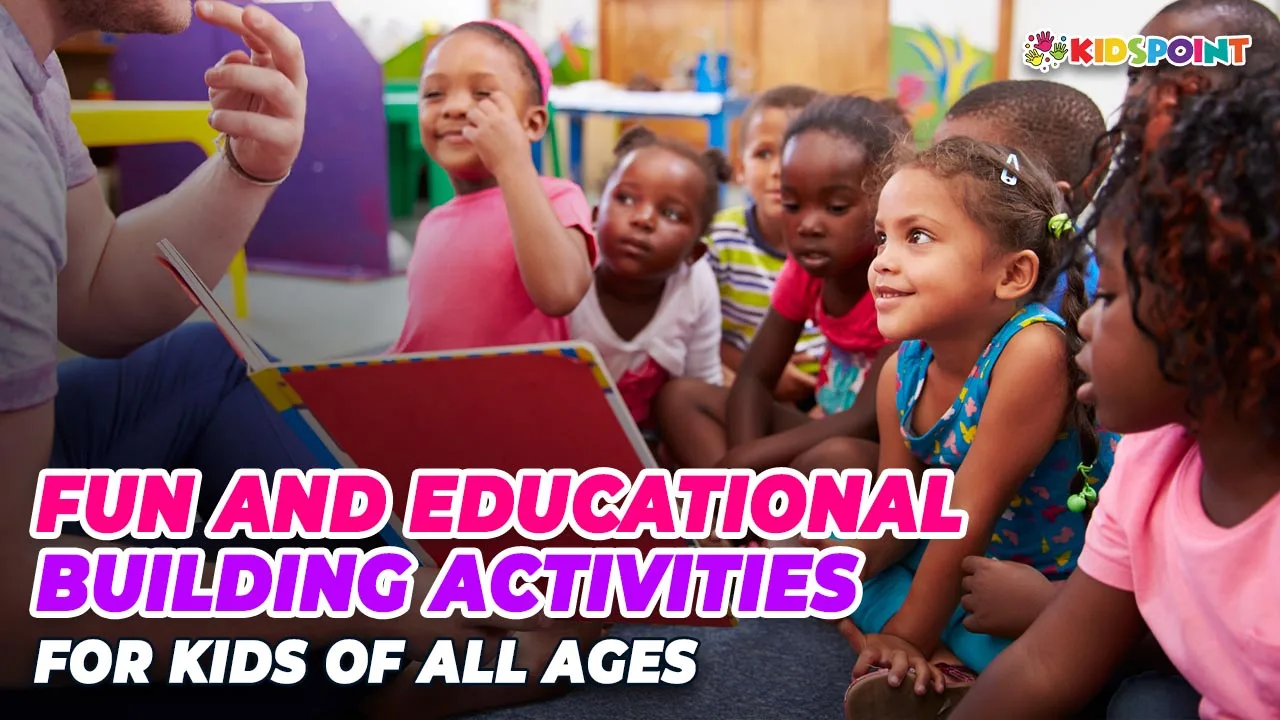Building activities are a fantastic way for kids to engage in hands-on learning while fostering creativity, problem-solving skills, and teamwork. Whether using simple household materials or specialized construction kits, these activities help children develop essential cognitive and motor skills in a fun and interactive way. At The Kids Point, we believe that every child can benefit from the joy and educational value of building activities. In this guide, we will explore various building projects suitable for different age groups, ensuring that kids of all ages can enjoy learning through play.
Benefits of Building Activities for Kids
Building activities offer numerous developmental advantages, including:
- Enhancing Creativity: Encourages kids to think outside the box and come up with unique designs.
- Improving Problem-Solving Skills: Helps children learn how to approach challenges and find solutions.
- Strengthening Fine and Gross Motor Skills: Engages both small and large muscle groups through hands-on construction.
- Encouraging Teamwork and Communication: Promotes collaboration when working on group projects.
- Introducing Basic Engineering and Physics Concepts: Provides early exposure to STEM (Science, Technology, Engineering, and Math) principles.
Building Activities for Toddlers (Ages 1-3)
At this stage, children are just beginning to explore the world of building. Activities should focus on simple stacking, balancing, and connecting objects.
Block Towers
- Use large, soft blocks or wooden blocks.
- Encourage toddlers to stack them up and knock them down.
- Helps with hand-eye coordination and spatial awareness.
Cup Stacking
- Provide plastic cups for stacking.
- Encourage different patterns, such as pyramids or towers.
- Develops fine motor skills and patience.
Play Dough Construction
- Use play dough to roll, mold, and create simple structures.
- Add sticks or straws for additional support.
- Enhances sensory exploration and creativity.
Building Activities for Preschoolers (Ages 3-5)
Preschoolers can handle slightly more complex projects that introduce them to structure and stability.
Cardboard Box Creations
- Provide empty cardboard boxes, tape, and markers.
- Let kids build forts, castles, or cars.
- Encourages imaginative play and problem-solving.
Popsicle Stick Bridges
- Use glue and popsicle sticks to create bridges.
- Introduce basic engineering principles like balance and load-bearing structures.
Pipe Cleaner Sculptures
- Give kids pipe cleaners to twist into shapes and structures.
- Helps improve dexterity and creativity.
Building Activities for Elementary Kids (Ages 6-10)
As kids grow, they can start working on more structured projects that challenge their skills.
LEGO Engineering Challenges
- Assign challenges such as building the tallest tower or a functional bridge.
- Encourages strategic thinking and creativity.
Marble Run Construction
- Use tubes, cardboard, or store-bought sets to create a marble run.
- Introduces concepts of gravity and momentum.
Mini Catapults
- Build small catapults using popsicle sticks, rubber bands, and spoons.
- Teaches basic physics and mechanics in a fun way.
Building Activities for Tweens and Teens (Ages 11+)
Older children can engage in more advanced building projects that incorporate technology and engineering principles.
DIY Hydraulic Arm
- Use syringes, tubing, and cardboard to create a working hydraulic arm.
- Introduces fluid mechanics and robotics.
Cardboard Roller Coaster
- Design and construct a working roller coaster for marbles.
- Encourages design thinking and experimentation.
Coding and Robotics Kits
- Engage in coding challenges with robotics kits like LEGO Mindstorms or Arduino.
- Develops computational thinking and programming skills.
Tips for Successful Building Activities
- Provide Open-Ended Materials: Encourage creativity by using items like straws, tape, and recyclables.
- Encourage Collaboration: Let kids work together to build bigger and better structures.
- Ask Open-Ended Questions: Stimulate thinking by asking, “What would happen if we added more support?”
- Make it a Challenge: Create friendly competitions, like building the strongest bridge or the fastest marble run.
- Celebrate Success and Failure: Encourage kids to learn from their mistakes and improve their designs.
Building activities are a fantastic way to inspire creativity, critical thinking, and hands-on learning in children of all ages. Whether stacking blocks as a toddler, constructing bridges in elementary school, or designing robotic projects as a teenager, every stage of development benefits from engaging in these activities. The Kids Point encourages families and educators to incorporate fun and educational building projects into everyday learning, helping children develop essential skills while having a blast. So grab some materials and start building—your child’s imagination is the only limit!


